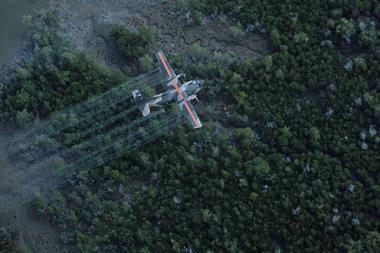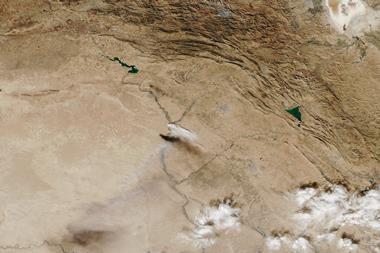Pentagon reveals hundreds of troops who fought in Iraq and Afghanistan may have been exposed to chemical weapons
An internal Pentagon review has found that 734 US troops reported potential exposure to chemical warfare agents including sarin and sulfur mustard while serving in Iraq and Afghanistan between 2004 and 2010. Military personnel came into contact with the chemical warfare agents in makeshift bombs and old weapons caches.
The information is based on data from post-deployment health assessments, and a review of the medical records of all service members assigned to units where exposures were reported. The actual extent of that exposure is ‘not yet clear’, said Pentagon press secretary Rear Admiral John Kirby in a statement last week.
All current service members identified as possibly having been exposed to chemical warfare agents will be offered medical evaluations to determine their actual level of exposure and identify adverse health impacts. For those who have left the service, the Pentagon plans to provide the US Department of Veterans Affairs with all necessary information and documentation to verify exposure and ensure that they receive the appropriate services and disability benefits to which they are entitled. The Pentagon has also set up a free telephone hotline for self-reporting possible exposures, hoping to ensure that no service member who may be at risk is missed during this review.
However, experts point out that the negative health outcomes from exposure to chemical warfare agents may not surface until many years after the contact.
‘We have long believed that military service, particularly on a combat theatre of operations, can be hazardous to your health – it’s more than just the bullets and the bombs,’ says Tom Berger, executive director of the Veterans Health Council within Vietnam Veterans of America. As well as chemical weapons, he expresses concern about the military’s use of burn pits – areas set aside for burning waste, which can include hazardous compounds. He notes that military personnel downwind of these pits are forced to breathe in the materials that are destroyed.
‘This is just the tip of the iceberg,’ Berger tells Chemistry World. Better information about these exposures, he says, will help the case for veterans who served in Iraq and Afghanistan.
‘We have people who were exposed to chemical and biological agents that can cause harm years later,’ Berger states. ‘Now that the Pentagon has come out publicly and admits that our military people were exposed to these kinds of things, we need to take care of it—we need good diagnoses and effective, evidence-based treatments.’












No comments yet